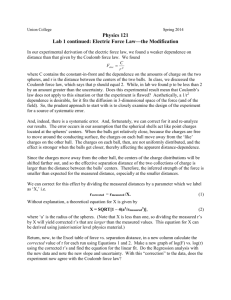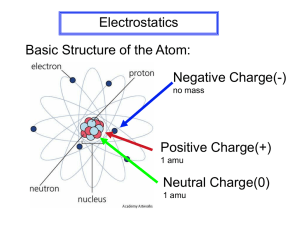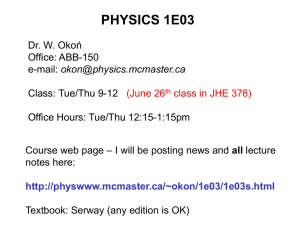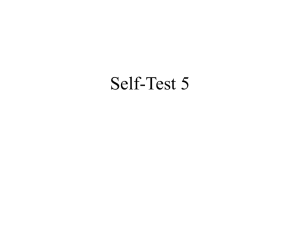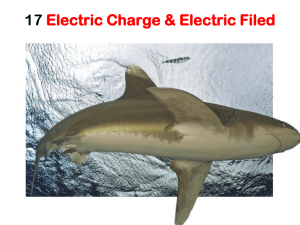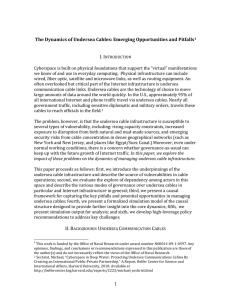Ch. 21 Homework
advertisement
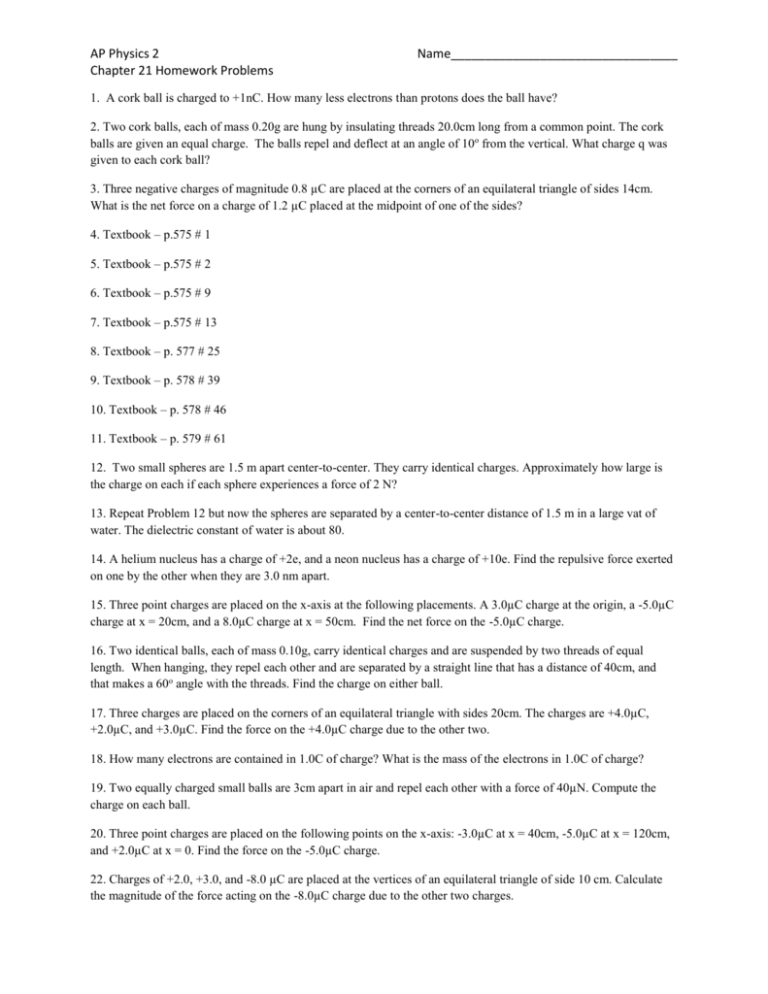
AP Physics 2 Chapter 21 Homework Problems Name_________________________________ 1. A cork ball is charged to +1nC. How many less electrons than protons does the ball have? 2. Two cork balls, each of mass 0.20g are hung by insulating threads 20.0cm long from a common point. The cork balls are given an equal charge. The balls repel and deflect at an angle of 10o from the vertical. What charge q was given to each cork ball? 3. Three negative charges of magnitude 0.8 µC are placed at the corners of an equilateral triangle of sides 14cm. What is the net force on a charge of 1.2 µC placed at the midpoint of one of the sides? 4. Textbook – p.575 # 1 5. Textbook – p.575 # 2 6. Textbook – p.575 # 9 7. Textbook – p.575 # 13 8. Textbook – p. 577 # 25 9. Textbook – p. 578 # 39 10. Textbook – p. 578 # 46 11. Textbook – p. 579 # 61 12. Two small spheres are 1.5 m apart center-to-center. They carry identical charges. Approximately how large is the charge on each if each sphere experiences a force of 2 N? 13. Repeat Problem 12 but now the spheres are separated by a center-to-center distance of 1.5 m in a large vat of water. The dielectric constant of water is about 80. 14. A helium nucleus has a charge of +2e, and a neon nucleus has a charge of +10e. Find the repulsive force exerted on one by the other when they are 3.0 nm apart. 15. Three point charges are placed on the x-axis at the following placements. A 3.0µC charge at the origin, a -5.0µC charge at x = 20cm, and a 8.0µC charge at x = 50cm. Find the net force on the -5.0µC charge. 16. Two identical balls, each of mass 0.10g, carry identical charges and are suspended by two threads of equal length. When hanging, they repel each other and are separated by a straight line that has a distance of 40cm, and that makes a 60o angle with the threads. Find the charge on either ball. 17. Three charges are placed on the corners of an equilateral triangle with sides 20cm. The charges are +4.0µC, +2.0µC, and +3.0µC. Find the force on the +4.0µC charge due to the other two. 18. How many electrons are contained in 1.0C of charge? What is the mass of the electrons in 1.0C of charge? 19. Two equally charged small balls are 3cm apart in air and repel each other with a force of 40µN. Compute the charge on each ball. 20. Three point charges are placed on the following points on the x-axis: -3.0µC at x = 40cm, -5.0µC at x = 120cm, and +2.0µC at x = 0. Find the force on the -5.0µC charge. 22. Charges of +2.0, +3.0, and -8.0 µC are placed at the vertices of an equilateral triangle of side 10 cm. Calculate the magnitude of the force acting on the -8.0µC charge due to the other two charges. 23. The most common isotope of hydrogen contains a proton and an electron separated by about 5.0 x 10-11 m. The mass of a proton is approximately 1.7 x 10 -27 kg. The mass of the electron is approximately 9.0 x 10-31 kg. a) Use Newton's law of universal gravitation to calculate the gravitational force between the electron and proton in the hydrogen atom. b) Use 1.6 x 10-19 C as the elementary unit of charge to determine the force of attraction between the two particles. c) How many orders of magnitude greater is the electric force between the two particles than the gravitational force between the two particles? How important are gravitational force effects in this case? 24. Two pith balls shown in the diagram below have a mass of 1.0 g each and have equal charges. One pith ball is suspended by an insulating thread. The other charge is brought to within 3.0 cm. of the suspended ball (r = 0.03 m). The suspended pith ball is deflected from its rest position until the thread forms an angle of 30˚ with the vertical. At this angle, the ball is in equilibrium. a) Draw a force diagram depicting the forces acting on the suspended ball. Calculate: (b) mg (c) FE (d) the charge on the pith balls 30 0.03 m 25. Three charges are placed as shown below. Determine the magnitude and direction of the net electrostatic force on charge q1. As part of the solution, include a force diagram.
